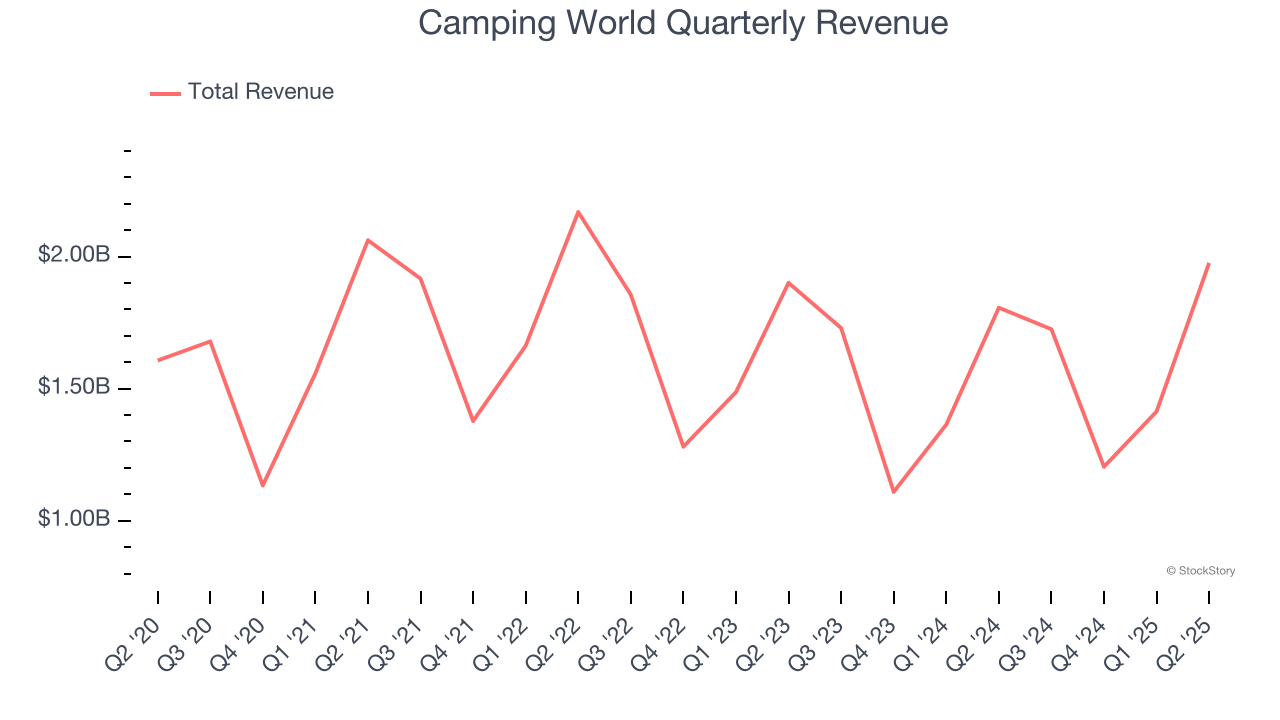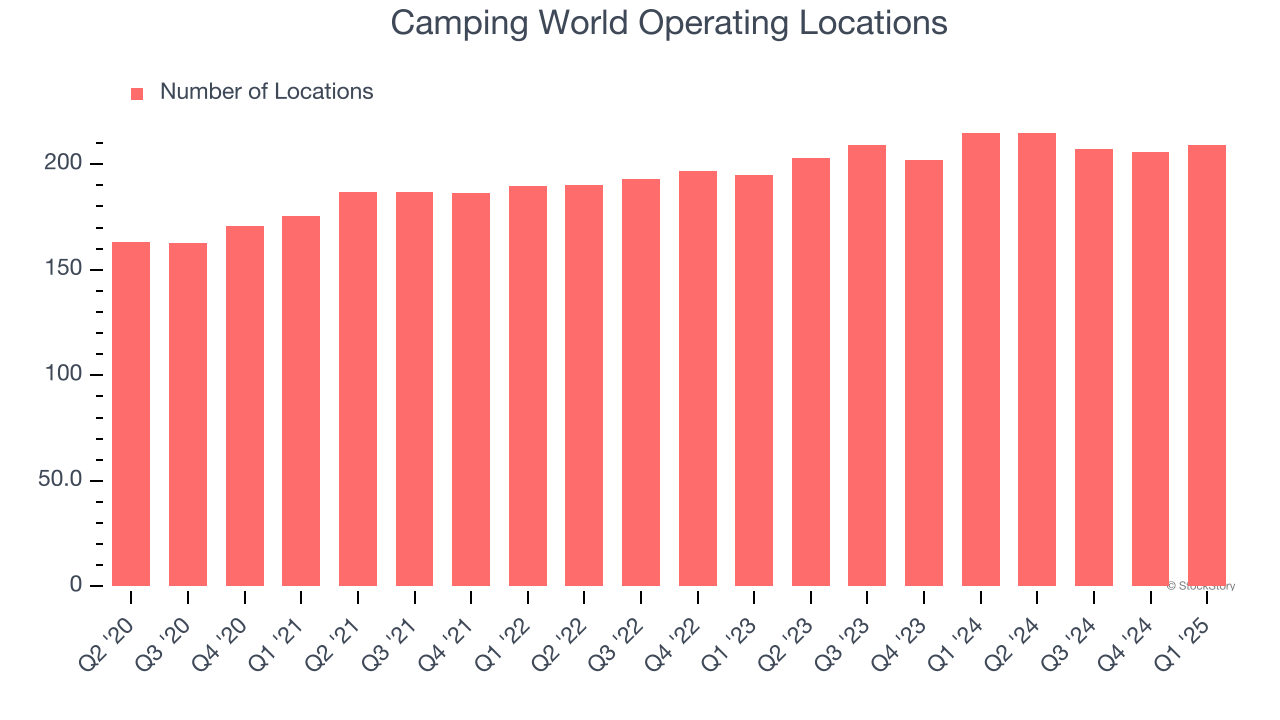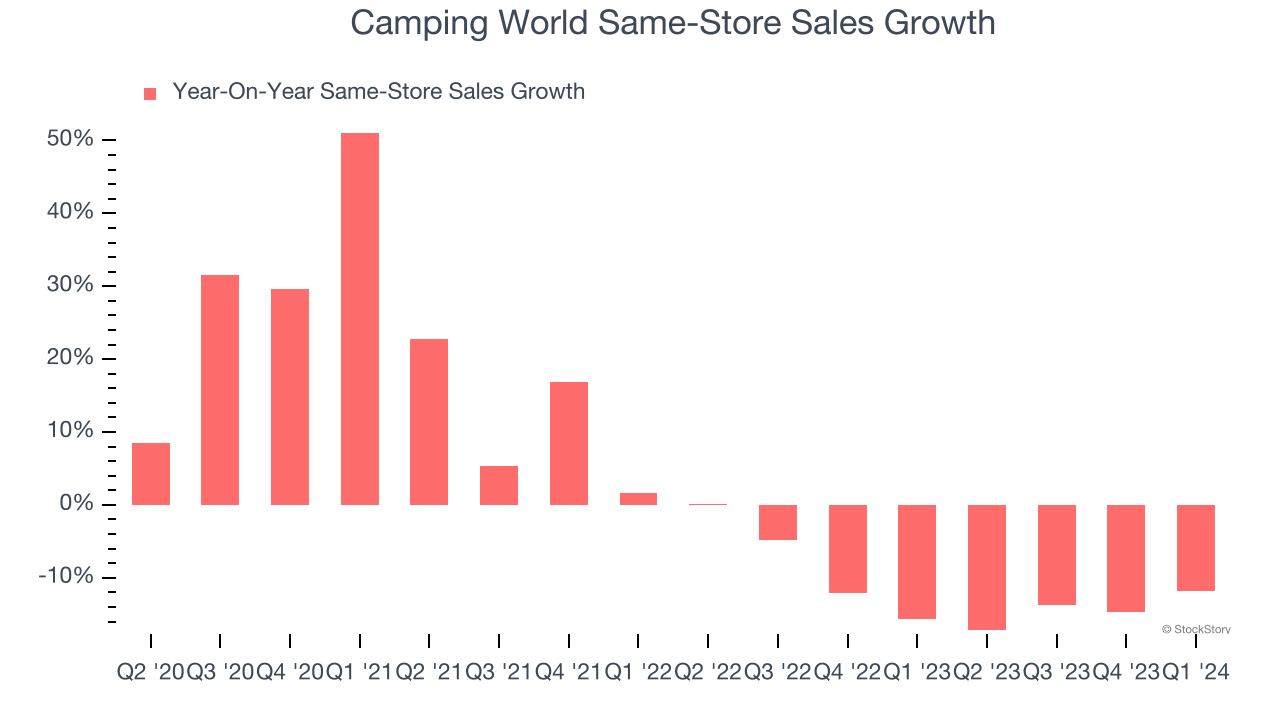
Recreational vehicle (RV) and boat retailer Camping World (NYSE:CWH) reported Q2 CY2025 results topping the market’s revenue expectations, with sales up 9.4% year on year to $1.98 billion. Its non-GAAP profit of $0.57 per share was 4.8% below analysts’ consensus estimates.
Is now the time to buy Camping World? Find out by accessing our full research report, it’s free.
Camping World (CWH) Q2 CY2025 Highlights:
- Revenue: $1.98 billion vs analyst estimates of $1.88 billion (9.4% year-on-year growth, 5.2% beat)
- Adjusted EPS: $0.57 vs analyst expectations of $0.60 (4.8% miss)
- Adjusted EBITDA: $142.2 million vs analyst estimates of $139.4 million (7.2% margin, 2.1% beat)
- Operating Margin: 6.6%, up from 5.3% in the same quarter last year
- Free Cash Flow Margin: 8.2%, up from 7.2% in the same quarter last year
- Market Capitalization: $1.12 billion
Marcus Lemonis, Chairman and Chief Executive Officer of CWH stated, “I am unbelievably pleased with our Company’s financial performance in the quarter, driven by volume, margin performance and aggressive cost controls. We continue to surgically manage our inventory to find volume and gross profit opportunities leveraging our new and used supply chains, our contract manufacturing relationships, our sophisticated data analytics, and the strength of our balance sheet to put the right inventory on the ground at the right time and the right price. Our nimbleness is a true testament to the differentiation and durability of our model.”
Company Overview
Founded in 1966 as a single recreational vehicle (RV) dealership, Camping World (NYSE:CWH) still sells RVs along with boats and general merchandise for outdoor activities.
Revenue Growth
A company’s long-term performance is an indicator of its overall quality. Any business can put up a good quarter or two, but the best consistently grow over the long haul.
With $6.32 billion in revenue over the past 12 months, Camping World is a mid-sized retailer, which sometimes brings disadvantages compared to larger competitors benefiting from better economies of scale.
As you can see below, Camping World grew its sales at a sluggish 4.6% compounded annual growth rate over the last six years (we compare to 2019 to normalize for COVID-19 impacts).

This quarter, Camping World reported year-on-year revenue growth of 9.4%, and its $1.98 billion of revenue exceeded Wall Street’s estimates by 5.2%.
Looking ahead, sell-side analysts expect revenue to grow 2.6% over the next 12 months, a slight deceleration versus the last six years. This projection is underwhelming and implies its products will see some demand headwinds.
Unless you’ve been living under a rock, it should be obvious by now that generative AI is going to have a huge impact on how large corporations do business. While Nvidia and AMD are trading close to all-time highs, we prefer a lesser-known (but still profitable) stock benefiting from the rise of AI. Click here to access our free report one of our favorites growth stories.
Store Performance
Number of Stores
A retailer’s store count influences how much it can sell and how quickly revenue can grow.
Camping World opened new stores at a rapid clip over the last two years, averaging 3.6% annual growth, much faster than the broader consumer retail sector. This gives it a chance to become a large, scaled business over time.
When a retailer opens new stores, it usually means it’s investing for growth because demand is greater than supply, especially in areas where consumers may not have a store within reasonable driving distance.
Note that Camping World reports its store count intermittently, so some data points are missing in the chart below.

Same-Store Sales
A company's store base only paints one part of the picture. When demand is high, it makes sense to open more. But when demand is low, it’s prudent to close some locations and use the money in other ways. Same-store sales gives us insight into this topic because it measures organic growth for a retailer's e-commerce platform and brick-and-mortar shops that have existed for at least a year.
Camping World’s demand has been shrinking over the last two years as its same-store sales have averaged 13.4% annual declines. This performance is concerning - it shows Camping World artificially boosts its revenue by building new stores. We’d like to see a company’s same-store sales rise before it takes on the costly, capital-intensive endeavor of expanding its store base.
Note that Camping World reports its same-store sales intermittently, so some data points are missing in the chart below.

Key Takeaways from Camping World’s Q2 Results
We liked how Camping World beat analysts’ revenue and EBITDA expectations this quarter. On the other hand, its gross margin slightly missed and its EPS fell short of Wall Street’s estimates. Overall, we think this was a mixed quarter, and shares traded down 1.6% to $17.35 immediately after reporting.
Big picture, is Camping World a buy here and now? The latest quarter does matter, but not nearly as much as longer-term fundamentals and valuation, when deciding if the stock is a buy. We cover that in our actionable full research report which you can read here, it’s free.
